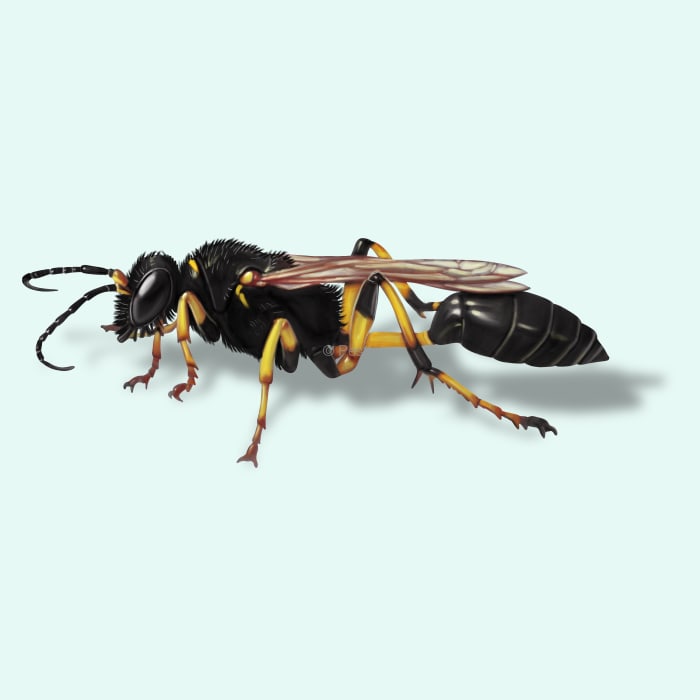How to identify and treat mud daubers

Dealing with mud dauber wasps in and around your home
Discovering a wasp nest being built on your porch, in a shed, or somewhere in your yard can be a little unnerving. It can feel like those wasps are taking your private space and their threats of a potential sting keep you at bay!
Fortunately, mud dauber wasps are not very aggressive and are unlikely to sting a passerby. They can actually be beneficial to your yard by preying on spiders, like black widows. However, it’s important to be cautious around their nests and remove them properly if they become a nuisance.
How to identify mud daubers
While there are several species of mud dauber wasps and not all of them look alike, they do share a few similar characteristics. The most distinct characteristic is the threadlike waist that connects the thorax with the abdomen. They are usually black or sometimes metallic blue and will live alone as a solitary wasps.
Their nests are another sure way to identify the wasps, as they build these tube-like structures from nearby mud. The nests can also be reused by another species of mud dauber that only carries water to the nest to make repairs.
How big are mud daubers?
Mud daubers are about 1 inch long.
What other wasps look like a mud dauber?
Paper wasps or hornets could be mixed up with mud daubers. The biggest differences are the long thin waist of mud daubers, and their nests made from mud. Hornets and paper wasps form colonies with other wasps, have thicker waists, and are more aggressive. Additionally, mud daubers are active in the spring, and paper wasps are active in the fall. Hornets and yellow jackets are more active in the summer.
Where do mud daubers live?
You can find mud daubers throughout the United States and they typically build their nests near human structures. The nests are constructed by females from nearby mud and she stings spiders to paralyze them, stuffs them into the tube, and lays an egg on the spiders. The spiders are then eaten by the growing wasp grub inside the cell.
Female mud daubers can pack as many as 25 live spiders into one cell for the grub to feed on. One species of mud dauber even preys on black widow spiders.
How to get rid of mud daubers
Mud daubers aren’t very dangerous and they rarely sting. But, if you go messing with their nests, you might get stung.
Here are some ways to keep mud daubers away from your property:
- Treat the nest with wasp spray
- Remove abandoned mud tubes and spray residue off with soap and water
- Seal gaps and cracks where spiders might be hiding
A perimeter spray used as a barrier around the home can help deter mud dauber wasps from building their nests. Pestie offers a pro-grade DIY solution to help keep wasps and other pests from entering your home.
Treat mud daubers with Pestie
If you're still having trouble keeping mud daubers away, the best option is to use a pro-grade, effective pest control solution like Pestie.
Pestie is a do-it-yourself pest control solution that's specially designed to keep mud daubers and other pests away from your home.
With Pestie, you can rest easy knowing that your living space is protected and free of creepy crawlies. And the best part? It's designed for people, pets, and the planet, so you can say goodbye to harsh chemicals and hello to peace of mind!
- Save hundreds compared to traditional annual pest plans
- People, pet, and planet-friendly
- Pro-grade customized formulas
Quick facts
- Scientific name
Families - Crabronidae and Sphecidae
- Other common names
Mud Wasps, Dirt Daubers








